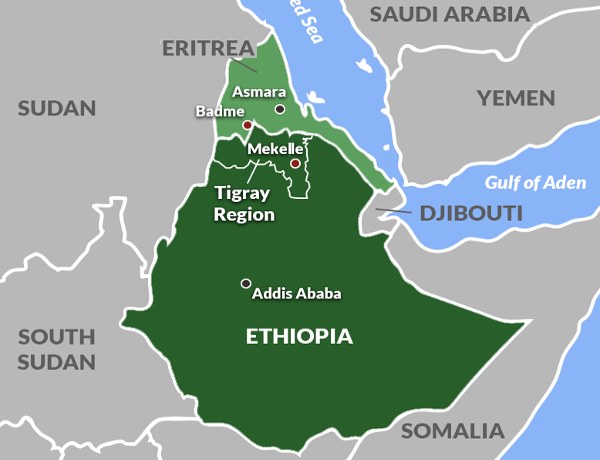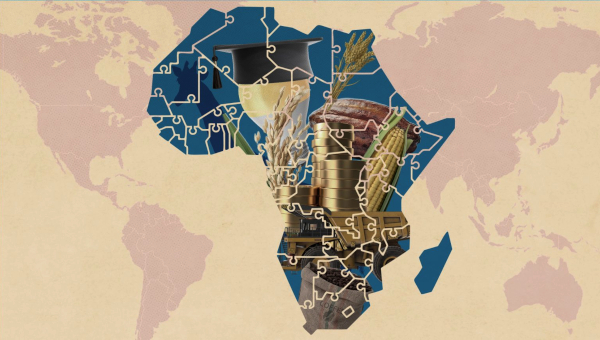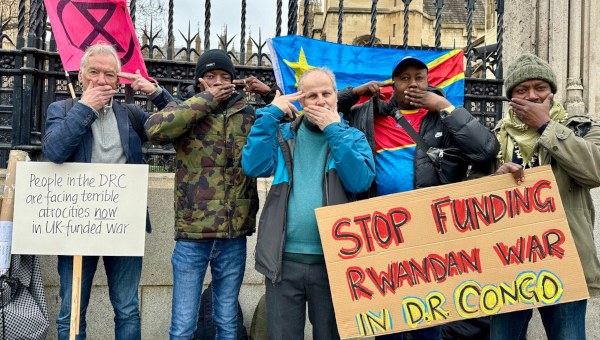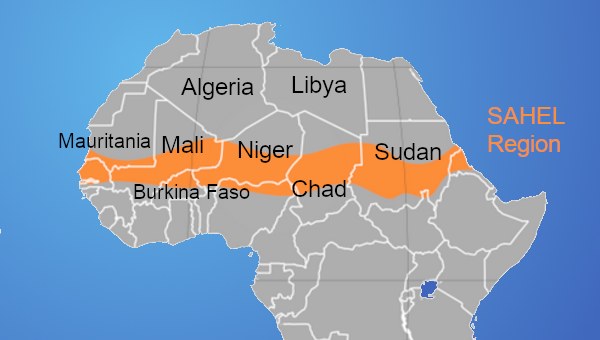Ethiopia Entering a Dangerous Phase
Paulos Tesfagiorgis is interviewed by Pierre Beaudet.
During the liberation war from the mid-seventies to the early 1990s, Paulos Tesfagiorgis was head of the Eritrean Relief Agency (ERA), the central organism that organized the provision of goods in the liberated areas of Eritrea and supported the Eritrean People’s Liberation Front (EPLF) shadow state they had set up throughout the country until their victory in 1991. As a senior member of the EPLF, Tesfagiorgis was involved, along with Isaias Afwerki, in the core leadership until the end of the 1990s, when serious cracks occurred within the government and the party, which led to the imprisonment and exile of many leaders, including Ministers and journalists and Tesfagiorgis.
Later, the anti-democratic drift continued through ups and downs that have made Eritrea one of the poorest, most repressed and deprived African countries. In parallel, the Afwerki regime has been involved in many wars, resuming military confrontation (1999-2002) with Ethiopia and various regional interventions in the Sudan and Somalia. In the meantime, Tesfagiorgis, like many of his fellow compatriots and former leaders of the Eritrean revolution, have tried to bring the vast Eritrean diaspora together around a programme of peaceful change. The current war in Ethiopia in which Eritrea is also involved could lead to another case of devastation affecting the whole region.

Pierre Beaudet (PB): This new war has erupted within Ethiopia (105 million people) and the rebellious northern province of Tigray (6 million people). It seems strange, considering that, from 1991 (when the revolution toppled the Mengistu regime), the Tigray People’s Liberation Front (TPLF) was central to the new government. Indeed, the head of the TPLF, Meles Zenawi, became the head of state of Ethiopia until his death in 2012. What has happened?
Paulos Tesfagiorgis (PT): The new Ethiopia that came about in 1991 was the result of a military victory against the Derg (the military government of Ethiopia) led by the TPLF and the Eritrean People’s Liberation Front (EPLF). At that time, as comrades in arms, the two fronts took control of both Ethiopia and Eritrea. As far as Ethiopia is concerned, the TPLF dominated the alliance of four parties formally in charge (Ethiopian People’s Revolutionary Democratic Front) of government with a strong core of experienced military and political Tigrinya leaders. They ruled with an iron fist, but they were successful in transforming the country by investing heavily in infrastructure, industry, and education, and creating a huge wealth.
PB: What was the project?
PT: An African version of the “development state” was imagined by Meles. With these initiatives, a relatively efficient state apparatus, and later, with Chinese investments, Ethiopia went in a double-digit growth rate several years. Even in the countryside, a new prosperous peasant class started to thrive. And contrary to other African states dependent on natural resources, the Ethiopian boom was land and labour-intensive, creating lots of jobs, and with a larger diversified base in both rural and urban areas. It was, one has to say, an African ‘success story’.
PB: So, for many years, Ethiopia had a Tigrinya-led government…
PT: Meles did not believe in rebuilding the country around democratic reforms. His plan to establish ethnically or regionally based provinces was more about weakening the traditional ruling group, the Amharas (27% of the population), who had dominated Ethiopia for most of its modern history and empower the historically disadvantaged and oppressed ethnic groups. In the Amharic culture, traditions, attitude, and mental make-up: Ethiopia must be ruled by them. Other nationalities1 were looked down informally and formally discriminated. Meles had to face what came on the onset as an Amhara elite refusal, which was difficult to manage because many were senior bureaucratic and military personnel, as well as powerful economic elites, who thought and still think, they are entitled to rule the country. However, Meles came on top because of his sharp intellect and success on the economic front. The government, the parliament, the senior echelons of the administration, and especially the security forces and the army, remained, at least for the first 15 years, solidly in his hands.
PB: What went wrong then?
PT: First, conflicts erupted early with Eritrea. The old comrades fought a heavy war between 1998 and 2000 around an apparently benign border delimitation problem. I must say that despite my affection for Eritrea, it was the Eritrean government which was responsible for escalating a border skirmish to an all-out war. But this should not mean there were no provocations by the Ethiopians on the border areas; especially those who governed Tigray at the time. There were plenty. Instead of negotiating and allowing the joint committee to look into the issue and exhaust it mandate, Isaias send his mechanized units into Ethiopia, but he totally miscalculated his forces. Also, he did not realise that he was falling into exactly what the Tigrayans were looking for. This is where major fractures occurred within the Eritrean leadership, who saw Isaias launching his own war without consultation and participation in planning of all relevant and highly experienced members of the defence forces and political members. It can be said, he neither sought advice nor listened to advice. But he did it, and it led to a disastrous defeat for Eritrea. For Meles, this for some time consolidated his power. But as time went by, opposition grew in the cities, especially amongst students.
The Oromos, the largest demographic group in the country, became also unhappy about the fact that every decision was made by Meles and his party, who were acting as parallel government at every echelon of the state, provincially and nationally. Bear in mind that the TPLF was created under a strict Marxist-Leninist view largely influenced by Stalinist Albania! Accordingly, they practiced “democratic centralism,” i.e., centralizing without democratizing. Nonetheless, Meles who was a brilliant tactician managed to keep control, although when he died unexpectedly in 2004, cracks were appearing more and more within the leadership and the coalition party without absent of Meles to articulate issues and proffer solutions.
PB: And so, a new leadership appeared…
PT: Having lost their leader and leadership position, the TPLF thought it was safer to stay a bit quiet. However, a sort of a succession war quickly erupted within their ranks, initially with some of the leaders inclined to retreat to Tigray, which they were ruling at the provincial level and then, all of them abandoning the capital retreating to their region. The disagreement and confusion continued within EPRDF; the Amharas were, as usual, adamant in the wild hope of reconstituting an Amharic state. Other ethnic groups, most notably, Oromos, had gained in influence, through education and more economic power. This led to identify a “compromise” candidate, Abiy Ahmed. A former army intelligence officer, Abby was the head of the Oromo Democratic Party, one of the groups composing the leading alliance, the EPRDF. His main quality, in fact, was that he was not a Tigrinya but Oromo.
PB: He moved swiftly after been elected to be the EPRDF leader…
PT: He became Prime Minister, disbanded the EPRD, and created a new outfit, the Prosperity Party. In his first years in power, he became highly popular by signing peace with Eritrea, releasing thousands of political prisoners, and cleansing the state and the army from their traditional Tigrinya visible rulers. He also took his distance from the “development state” promoted by Meles, introducing neoliberal policies with large-scale privatization of state-owned enterprises and the liberalization of several key economic sectors. There is rumor, still not tested by facts, that he would have liked to minimize the Chinese influence by getting closer to the United States and its regional allies, especially Israel, Saudi Arabia, and the UAE.
PB: There is an ideological mantle over this?
PT: With his devoted Pentecostal background, Abiy has introduced more and more Christian messages, always reiterating the importance of faith.2 Symbolically at least, he has made lots of efforts to distinguish himself from the previous TPLF-led government and its political orientation in many ways, which reinforced his prestige amongst Oromos and Amhara.
PB: Who really initiated the conflict in Tigray?
PT: The TPLF bears a large part of the responsibility. They were ill-advised to confront Abiy directly at every stage and try to out-maneuver the federal state. They made a second blunder by retreating to their province, making themselves unreachable and some accused of corruption and other crimes untouchable. They organized, against the will of Abiy, a regional election that they won last September hands-down. Abiy immediately declared that this was illegal. They also raided the Northern Command of the Federal Defence Forces. It is not to say there was no cause on their part to act the way they did. But the wisdom of taking their region to war against the central government, especially when they are surrounded by enemies (Isaias in the north) and potential enemies (the Amharas in the south with their own grievances partly based on land) very risky. More than that, it was an enormous mistake to think they could retreat that and be left to rule their region. Abiy saw that immediately and appealed to the majority, Amharas and Oromos, to “save the nation.” The extreme hatred against Tigrayans in general and TPLF in particular reach an emotional level that was highly beneficial to the federal government.
PB: And Eritrea has been back into the picture?
PT: Throughout the building up of the conflict, it appears that Isaias and Abiy were consulting and plotting all the time. Eritrean military forces moved to the border with Tigray. Ethiopian federal forces were flown to Eritrea. For the Eritrean leader, this was an historical chance to weaken and decimate the arch-enemy, the TPLF, who had defeated Eritrea so badly in 1998, which Isaias took as a personal humiliation. In addition, I will not be surprised if Isaias takes this war as means to weaken the whole of the Ethiopian state, so that he can shine. He then gets a double advantage, against Tigray and against Ethiopia. According to local sources, Eritrean forces played a major role in the retaking of Tigray’s urban areas, sending several mechanized divisions and many thousand combatants.
PB: Is the pull-out by TPLEF forces from their capital Mekelle the end of the story?
PT: Debretsion Gebremichael, the head of the TPLF, has powerful political support in the province, plus an army of more than 150,000 soldiers, supplemented by a competent corps of trained officers. He was wise to move his troops out of the big cities to avoid a direct clash that would have been harsh on civilians, infrastructure, and even on his own forces. The dispersing in the countryside where they have huge arms caches seems rational. TPLF came to power through guerilla warfare; they know how it works. However, 2020 is not 1990. One of the biggest problems for the TPLF is the weakness of supply lines. During the liberation war, both TPLF and EPLF benefited from a system of procurement that went through Sudan. We could move around, sometimes take refuge, send our wounded soldiers to medical care, provide goods and services and even military hardware. Today it is not like this. It would take many years to rebuild that rear-base, not taking into account that Sudan and other regional powers (Egypt, in particular), while not friendly toward Ethiopia,3 are unlikely to invest themselves in what could be a long and bloody battle. In the field, it remains to be seen if the TPLF can build a sort of parallel administration, such as they had erected during the war against the Mengistu regime. Gebremichael says they will continue the fighting to the end. I would not totally discount this possibility. This can also mean destabilization of Ethiopia proper.
PB: What about Ethiopia? Was it a good move for Abiy?
PT: Abiy has declared total victory, claiming, falsely, that no civilians were killed, while in fact, hundreds have been murdered. They can control big cities, but despite their forces combined with the Eritrean army, it will not be so easy. Beyond its demographic advantage and its better economic situation, Ethiopia is still a poor country. The war will have a tremendous cost. Support from the Arab Emirates and other Gulf states can temporarily fill the gaps. But if we look at what has happened to Saudi Arabia/UAU war in Yemen, it is not evident that these petro-oligarchs can help to tip the balance of forces in a major way. In the meantime, Abiy apparently is not willing to negotiate. He has stated that he wants to arrest 76 TPLF senior personnel, declaring that they are “terrorists.”
PB: What about elsewhere in the rest of Ethiopia?
PT: The Amharas are dancing in the streets, so happy to see the Tigryans they despised all along are going down. But how long will they support Abiy if the war drags on? Another strange twist is the growing dissidence amongst the Oromos, especially with the youth, despite the ethnic origin of Abiy. Oromos, with new and more educated leadership, do not want to go back to the past when an Amhara-led government ruled over anyone else from the centre. They do not trust the Addis elite. They would want to increase more substantially the federalization of the country, something that the TPLF was unable or unwilling to do. The game is far from over.
PB: Are you afraid of what might come up?
PT: Before this war, there were 100,000 Eritrean refugees in Tigray, fleeing misery, repression and denial of any future because of the never-ending “national service.” Now that the Eritrean army is back to fighting Tigray, what will happen to the refugees there? For young Eritreans, returning to Eritrea is highly dangerous, as they will be rapidly conscripted and sent the war. Since the beginning of the war, one million people have been displaced in Tigray. The problem expands while unauthorized refugee camps are growing without access to food, water, electricity. There is another humanitarian disaster in the making, and it remains to be seen if the UN agencies will be able to access all the devastated regions.4 Elsewhere in the country, I am afraid of the anti-Tigrinya build-up in Addis. There are thousands of Tigrayans there, businesspeople, public servants, students. If the conflicts turn sour, it will be tempting for the government to declare war against the enemy “from within,” and signs of that are already visible. •
Endnotes
- Other nationalities include Oromo (the largest group with 34.9%), and Tigrayans (7.3%), and with smaller nations including, Sidama, Welayta, Gurage, Somali, Hadiya and Afar.
- Unreliable statistics estimate that 43% of the Ethiopians are orthodox Christians and 34%, Muslims.
- One important point of contention is about the building of dams on the upper Nile in Ethiopia, that are likely to create water shortages in Sudan and Egypt.
- As usual, the Ethiopian army is “directing” the humanitarian toward regions they control justifying ‘security reasons’.





